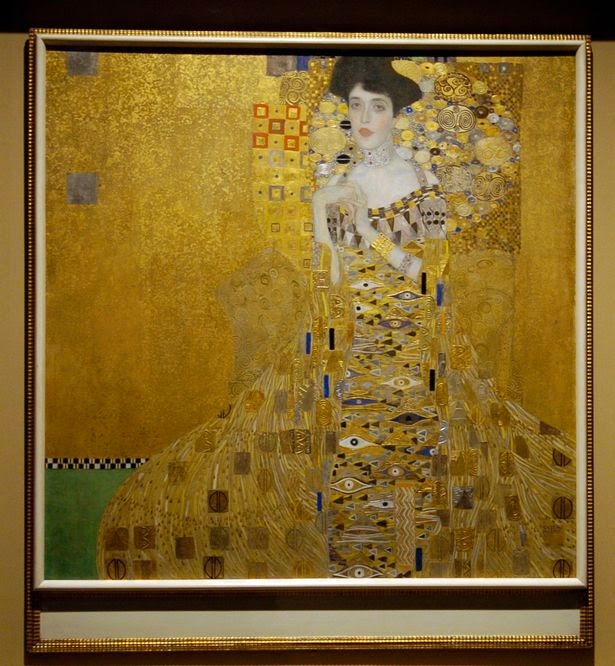me and Gustav Klimt - six degrees of separation
The first two minutes of the new movie "Woman in Gold" are the most precious.
In these frames, we see the hands of an artist lovingly cut up flakes of gold leaf and apply them to his brush, and then the canvas. We meet the sitter, but never the artist.
From there, "Woman in Gold" - starring Helen Mirren - is basically the story of a lawsuit, not a painting. It's an interesting story and Helen Mirren is always a wonderful actress... but I left wishing the movie had a bit more about the painter, Gustav Klimt, and his famous portrait of Adele Bloch-Bauer, which was later renamed "Woman in Gold."
Fortunately, my husband and I travel to New York frequently and on our last trip several weeks ago we went to see the real thing!
"Woman in Gold" is part of the permanent collection of the Neue Galarie, which is located across the street from the Metropolitan Museum of Art.
First the film... then the Neue... then on to the Met... the six degrees of separation between me and a tiny part of Gustav Klimt closes in.
 |
| Selfie outside the Neue Galarie in New York - 2015. |
During her lecture, Amelia encouraged textile lovers who visit New York to request a behind-the-scenes tour of the Ratti Textile Center at the Met. This is the center where they archive and store some 30,000 textiles - and it sits right there in the museum, not at an offsite storage. So, of course, I requested a tour and it was scheduled for the same day we saw Klimt's drawings and paintings at Neue.
 |
| A quilt researcher outside the Ratti Textile Center, Metropolitan Museum of Art, New York. |
 |
| Reproduction Klimt textile scarf - available from the Met Store. |
It got me wondering about the design process for how these were woven and printed, and also the people who originally purchased these textiles and how they used them. I 'm sure they were used in home decorating as well as clothing and accessories... and one day, maybe I'll go back to the Ratti and dig deeper into the origin and history of these beautiful textiles.
That would be a great story. Maybe even a better story than the lawsuit.



I loved the view of the artist working at the beginning of the film, too. How fortunate for you to see some of the textiles at the Met. I didn't know about the Ratti Textile Center. Something to look forward to.
ReplyDeleteKlimt is my favorite master artist. I made a Klimt inspired piece and want to do more. I will have to wait for the dvd to watch the movie. Imagine having those fabrics today... LeeAnna at not afraid of color
ReplyDelete